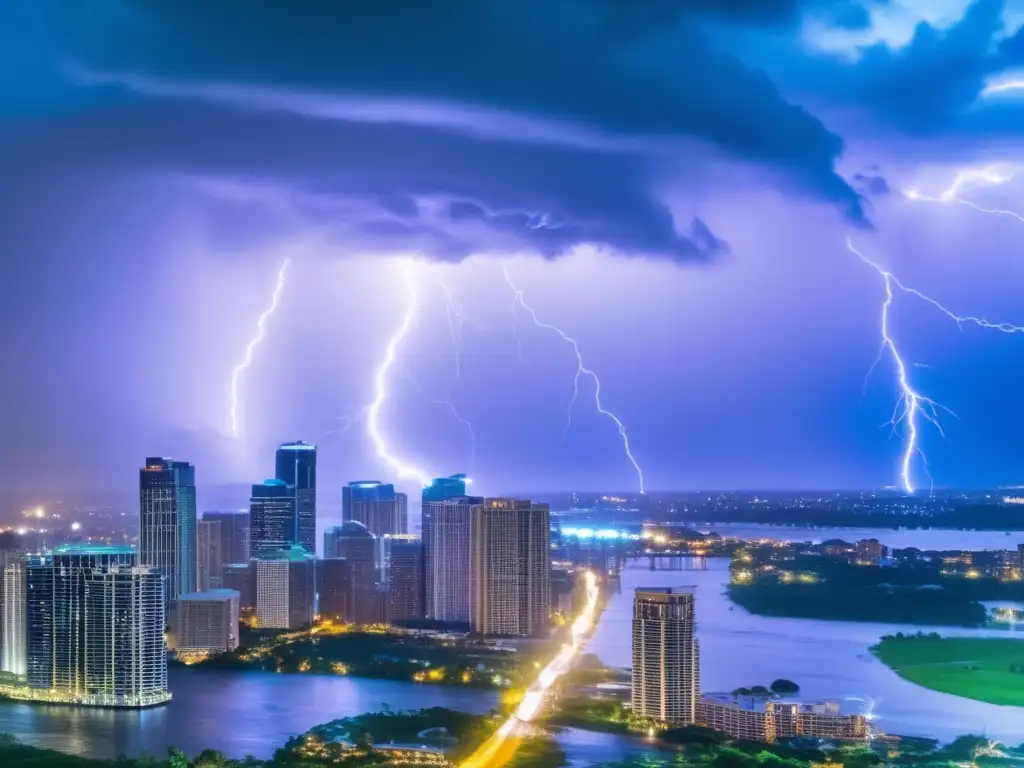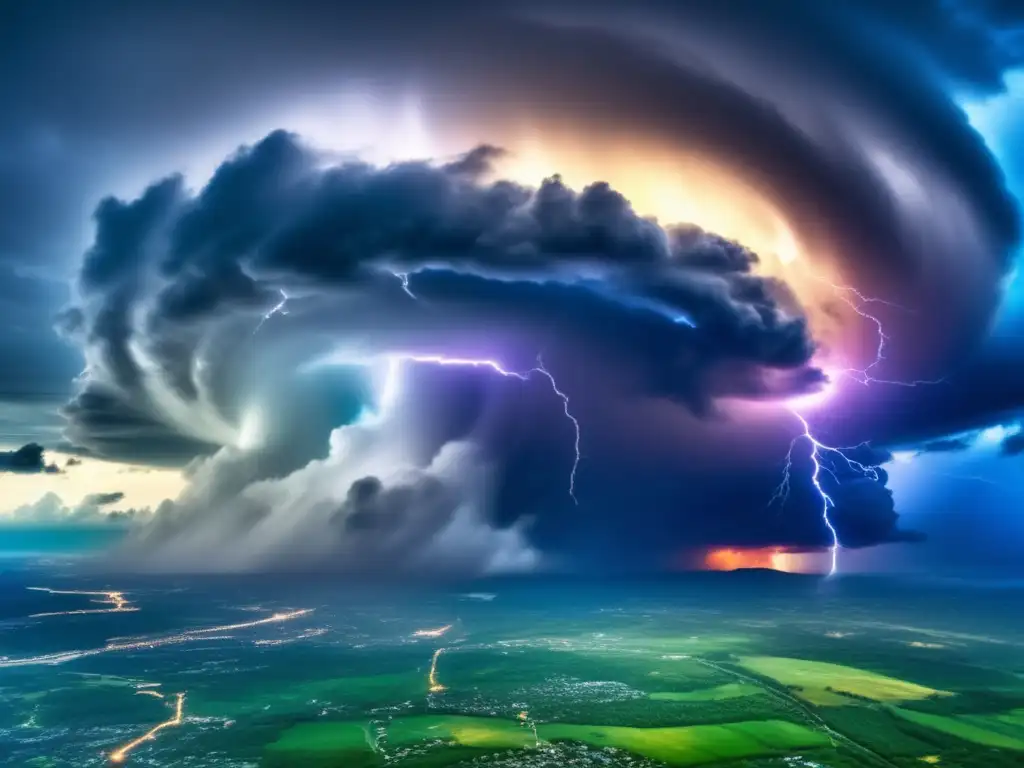Why Some Hurricanes Intensify Rapidly

Why Some Hurricanes Intensify Rapidly
Introduction
Hurricanes, also known as typhoons or cyclones, are natural phenomena that can cause severe damage to ecosystems and infrastructures. They are characterized by their high winds, heavy rainfall, and storm surges, which can impact coastal areas for several days or even weeks. One of the most critical aspects of hurricanes is their intensification process, which determines how strong they will become and how much destruction they will cause. In this article, we explore why some hurricanes intensify rapidly, shedding light on the factors that contribute to this phenomenon and what people can do to prepare for it.
The Role of Warm Water

Sea Surface Temperature
One of the main factors that contribute to the rapid intensification of hurricanes is warm sea surface temperature. When a hurricane moves over an area with warm water, it can absorb more heat, leading to increased evaporation and stronger convection currents. The warmer the water, the more energy the hurricane can acquire, which can result in higher wind speeds and heavier rainfall. This process can lead to rapid intensification, where a hurricane's maximum sustained wind speed increases by at least 35 miles per hour in 24 hours.
The Gulf Stream
Another important source of warm water for hurricanes is the Gulf Stream, a swift current of warm water that flows from the Gulf of Mexico to the Atlantic Ocean. The Gulf Stream can provide hurricanes with a significant amount of energy, allowing them to intensify rapidly and maintain their strength for longer periods. Hurricanes that travel along the Gulf Stream often cause more damage than those that stay over cold water because they have access to more heat and moisture.
La Niña and El Niño
The global climate phenomena known as La Niña and El Niño can also affect the sea surface temperature and, consequently, the intensity of hurricanes. La Niña is a condition where the Pacific Ocean's surface temperature is colder than average, while El Niño is the opposite, with warmer temperatures. When El Niño occurs, it can lead to an increase in hurricane activity in the Atlantic basin and a decrease in activity in the Pacific basin. Conversely, La Niña can result in more hurricanes in the Pacific and fewer in the Atlantic.
The Role of Atmospheric Conditions

Low Wind Shear
Another critical factor that contributes to rapid intensification is low wind shear, which is the difference in wind speed and direction at different altitudes. When the wind shear is low, the hurricane's structure can remain intact, allowing it to draw heat and moisture from the warm water. A lack of wind shear can also allow the convection currents to strengthen, leading to a more robust and well-organized storm. On the other hand, high wind shear can disrupt the hurricane's circulation, preventing it from intensifying and causing it to weaken.
Moisture and Instability
In addition to warm water and low wind shear, a hurricane's rapid intensification can also depend on the amount of moisture and instability in the atmosphere. Hurricanes require a supply of humid air to maintain their strength, and if the atmosphere is stable, it can further enhance the storm's development. If the conditions are right, a hurricane can rapidly intensify by absorbing moist air and releasing latent heat, which can cause the air to rise and create a stronger convection current.
Vertical Tilt
Vertical tilt refers to the horizontal displacement of a hurricane's center relative to the top of the storm. When a hurricane is tilted vertically, it can bring colder and dry air into the center of the storm, disrupting the convection currents and potentially weakening the hurricane. However, if the hurricane is vertically aligned, it can maintain its structure and intensify rapidly, drawing heat and moisture from the warm water below.
The Impact of Rapid Intensification

Rapidly intensifying hurricanes can cause significant economic and social consequences. They can result in the loss of life and property damage, power outages, transportation disruptions, and disrupted water supply and sewage systems. The impacts are often greater in urban areas, where there is a higher population density and more infrastructure to be affected. In addition, many communities may lack the resources or the knowledge to prepare for extreme weather events, leaving them vulnerable to the storms' destructive forces.
The Need for Preparedness
Given the risks associated with rapid intensification, it is essential for people living in hurricane-prone areas to be prepared for these severe weather events. Preparation can involve creating an emergency kit, securing personal property, and developing a plan to evacuate if necessary. It is also important to stay informed about the latest weather forecasts and warnings, as well as to follow instructions issued by local authorities. Ultimately, the best way to minimize the impact of a hurricane is to prepare in advance and take proactive measures to protect yourself and your community.
Frequently Asked Questions

-
What is rapid intensification?
Rapid intensification refers to the process by which a hurricane's maximum sustained wind speed increases by at least 35 miles per hour in 24 hours.
-
What causes a hurricane to intensify rapidly?
Several factors can contribute to rapid intensification, including warm water, low wind shear, moisture and instability in the atmosphere, and a lack of vertical tilt.
-
Can hurricanes that don't rapidly intensify still cause significant damage?
Yes, even hurricanes that do not undergo rapid intensification can cause significant damage, particularly if they are slow-moving or produce heavy rainfall and storm surges.
-
How can people prepare for a rapidly intensifying hurricane?
People can prepare for rapidly intensifying hurricanes by creating an emergency kit, securing personal property, and developing an evacuation plan. It is also important to stay informed about the latest weather forecasts and warnings.
-
What resources are available to help people prepare for hurricanes?
There are many resources available to help people prepare for hurricanes, including government websites, emergency management agencies, and nonprofit organizations.
Conclusion
Rapidly intensifying hurricanes are a significant threat to people living in hurricane-prone areas. The factors that contribute to rapid intensification, such as warm water, low wind shear, and atmospheric instability, can result in intense storms that cause significant damage to ecosystems and infrastructure. As such, it is crucial for individuals and communities to take proactive measures to prepare for these events, including creating an emergency kit, securing personal property, and staying informed about the latest weather forecasts and warnings. By working together and taking a proactive approach, we can minimize the impact of hurricanes and keep our communities safe.
We hope that this article has provided valuable insights into why some hurricanes intensify rapidly and what people can do to prepare for them. If you have any questions or comments, please feel free to share them in the comment section below. We encourage you to share this article with others who may find it useful and engaging.
Additional Resources

For further information on hurricanes and how to prepare for them, please visit the following websites:
- NOAA's Hurricane Preparedness Guide: https://www.nhc.noaa.gov/prepare/
- Ready.gov's Hurricane Preparedness Guide: https://www.ready.gov/hurricanes
- The Red Cross's Hurricane Safety Checklist: https://www.redcross.org/content/dam/redcross/atg/PDF_s/Preparedness___Disaster_Recovery/Hurricane/Hurricane.pdf
 Insurance And Hurricanes: What You Need To Know
Insurance And Hurricanes: What You Need To Know How We Measure The Rainfall In Hurricanes
How We Measure The Rainfall In Hurricanes The Mystery Of Hurricane-Free Zones Explained
The Mystery Of Hurricane-Free Zones ExplainedIf you want to discover more articles similar to Why Some Hurricanes Intensify Rapidly, you can visit the Basic knowledge about hurricanes: category.
Leave a Reply

Articulos relacionados: